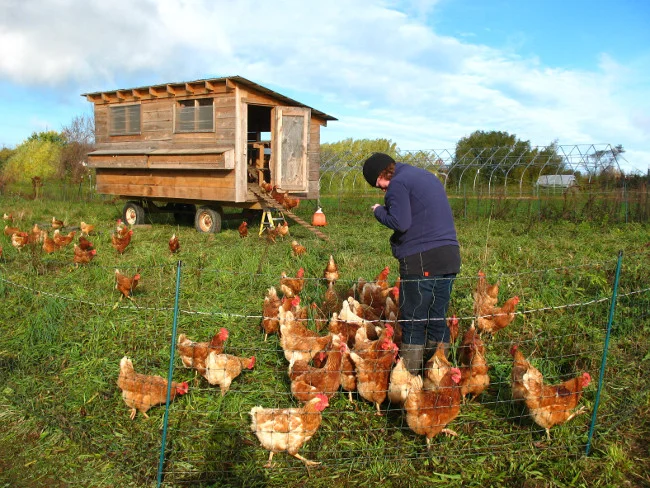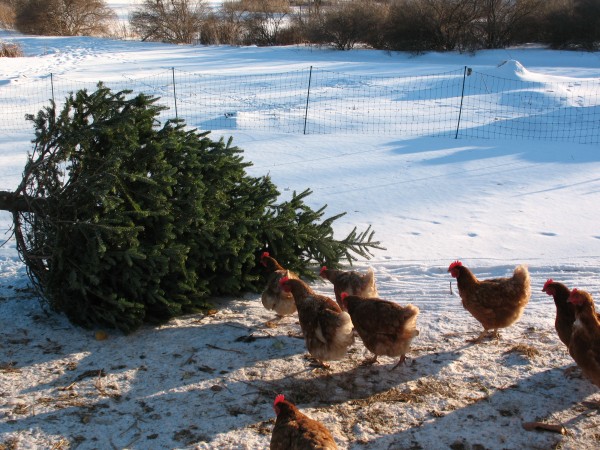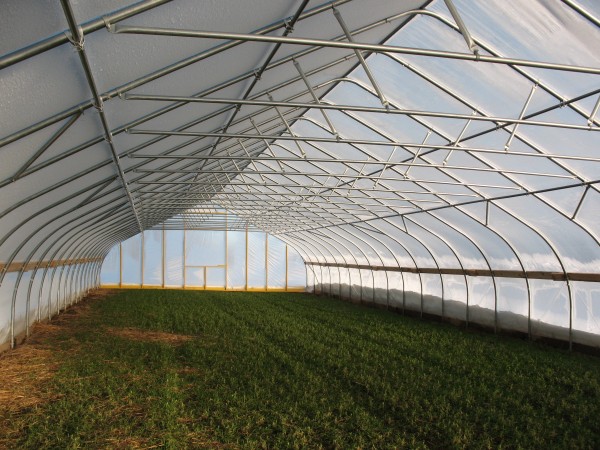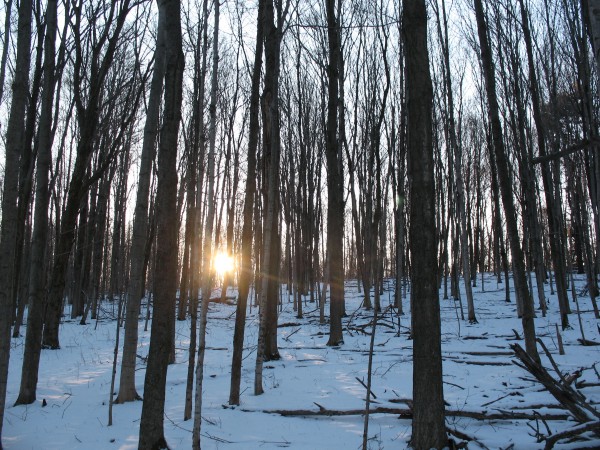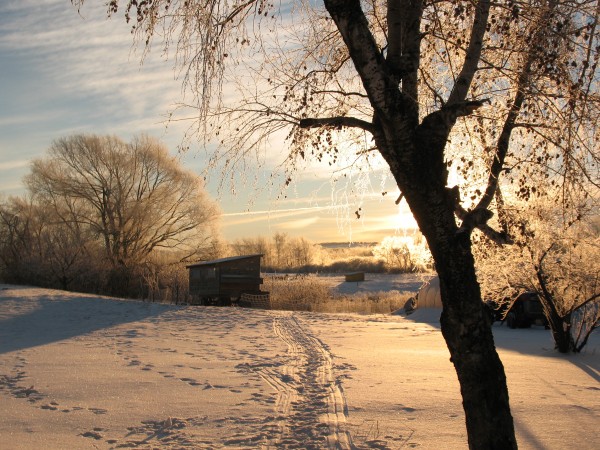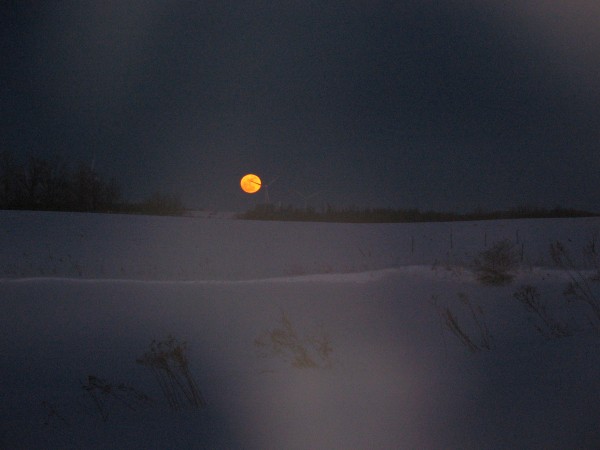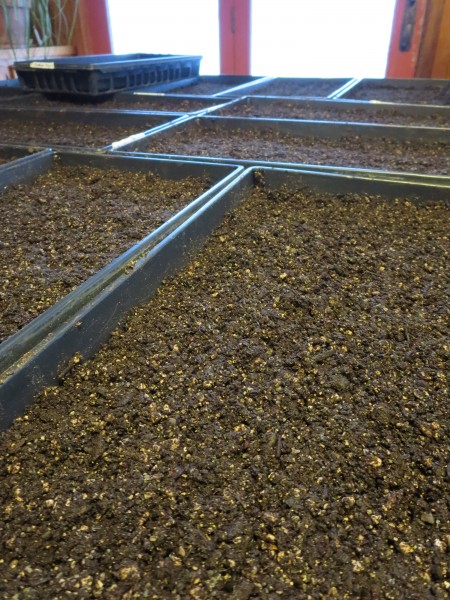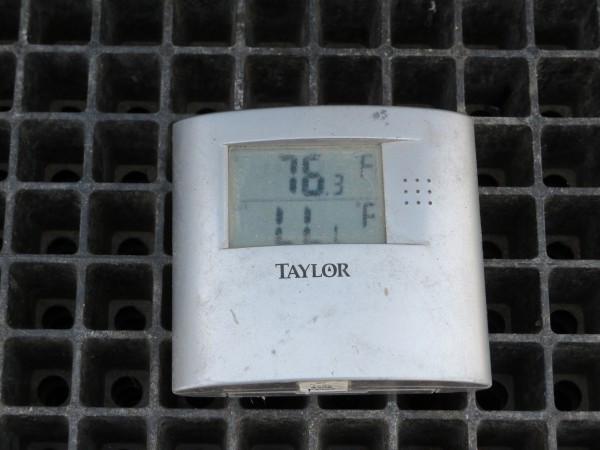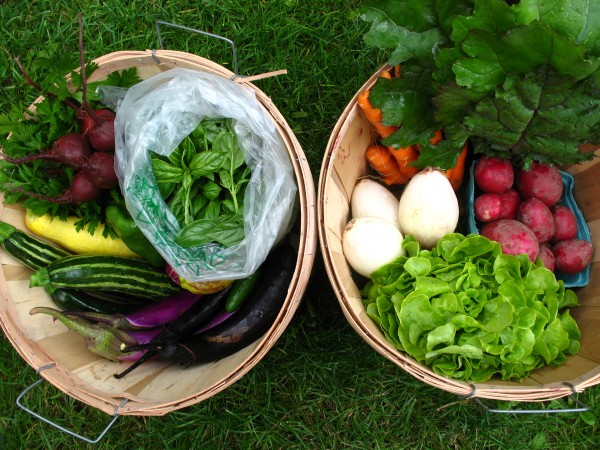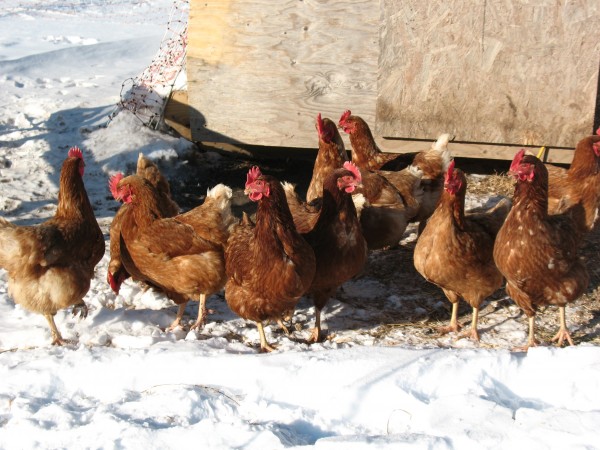Real Life Biodiversity on the Farm: Close Encounters of the Animal Kind
/The forces of nature are definitely one of the things farmers struggle with constantly (and okay, complain about). But after reading Wild Farm Alliance’s Biodiversity Guide (https://www.wildfarmalliance.org/biodiversity_guide) we realized that we don’t share enough about the even more awesome natural experiences that got us into farming and have us going back outside every day!
The thing about farming I couldn’t live without is being outside so much of the time and having the opportunity to see a stream of amazing, once in a lifetime events of cool animal interactions, year in and year out. Like thousands of close encounters with deer, rabbits, groundhogs, coyotes, mink, muskrats, foxes, and all the amazing birds. While some of those get-togethers aren’t always ideal (mink that’s prowling around the pond this winter, you better keep out of my hen house!), others are magical.
Small farms like ours are actually a pretty awesome natural environment thanks to their “edge” effect. This is where the woods hit the fields, in an edge that includes all the brushy bits and hedgerows that surround and split our farm. These edge zones are where you can see all the animals of the field hiding out for shade, all the animals of the woods sneaking through, and all the animals that just like to live in between the two environments in that thick in-between brush. It’s an incredibly rich reservoir of wildlife, a harbor for beneficial insects and predators, and a habitat for so many native plant and animal species.
As a small farm with smaller fields, we end up with more edges than the larger farms that surround us, which means that over the past six years, more and more critters are figuring this out and moving onto our farm. Each year we see new species and more birds and more good bugs (and yes, the edges also harbor bad bugs and plant diseases, but our hope is that in time the good will conquer the evil). We love seeing this because it means that we are succeeding in our goal to create a productive agricultural environment and good food while still supporting healthy animal populations. And while sometimes nature and its animal minions butt heads with us, for the most part we celebrate all the diversity around the farm.
For the blog this week, we wanted to take a few minutes to share our five favorite mini-animal interactions, and hopefully prime your eyes to be on the lookout for some awesome animal sightings of your own when you are U-Picking!
The Great Horned Owl creepers
First of all, I LOVE Great Horned Owls. All my life I’ve dreamed of seeing them in the wild, but despite spending most of my hours outside, I still never saw one until we moved to Fenner, where our farm is filthy with them. You think you are all alone doing chores, but then start to feel like you are being watched, and if it’s light enough, you might spot an immense silhouette of owl on a high branch against the sky.
In the woods around here, you regularly hear two owls: the Great Horned Owl is hoots most like the stereotypical owl (lot of “Whoot Whoots”), while the more common Barred Owl is smaller and has the call that sounds like “Who hoots for you?” Three years ago, we learned about the Great Horned Owls’ far less pleasant juvenile screeching phase when two baby owls hatched in the woods next to the farm and began serenading us with their god-awful noise every night. While we miss getting glimpses of the owlets, for our sleep and sanity we don’t mind if none nest nearby again!
Our most awesome owl experience came last summer while trying to catch a raccoon that had killed off 8 chickens (one of the times we got grumpy at nature). The best way to catch chicken killers is by baiting a trap with the dead chickens since they generally come back to the scene of the crime. In this case, a teenage Great Horned Owl must have seen a nice plump chicken just sitting there and decided, "Don’t mind if I do." The poor owl the next morning was quite peevish in the trap, snapping their beak angrily at us, but fine when released.
And in case you are wondering why I find these majestic guys creepy… well as someone who spends a lot of time alone in the fields, I am a bit of a podcast addict. One that sucked me in despite my normal aversion to any sort of true-crime things is the Criminal podcast. Specifically, this “Animal Instincts” episode where Great Horned Owls may or may not play a part in murder… http://www.thisiscriminal.com/episode-one-animal-instincts-1-31-2014-2/.
Birds that Block the Sky
The most amazing animal experience we had at this farm was in the first spring when we moved in. It was honestly a rough start, having moved to a place where we knew no one and neither of us having a job, and then starting a farm with no money on new land in a new community. We were in the front yard arguing about one of the many things we were debating over at the time, when eventually we realized that the flock of birds that was passing over was more like a river than flock. Millions of millions of millions of starlings and red wing blackbirds, in a sinuous curving line, almost so thick it was hard to see the sunset sky beyond them. For 16 more minutes they flowed above in waves.
It was truly one of the most amazing things either of us has seen, as the last stragglers floated north, all arguments forgotten amid the vast scope of moving nature. It made us a bit mournful to think about how even more spectacular the greater migrations of the now extinct past must have been, but also appreciate the starlings more, that even as an invasive species on this continent they adapted. And each year we enjoy seeing the mumerations of starlings and the redwings, but have never again been under that flowing feathery river… fingers crossed to be that lucky again.
A Knot of Toads
Our third year on the farm was the plagues of Egypt season, where we had eight of the ten biblical plagues hit at some point during the season. One of these plagues, however, was the cutest plague we’ve ever seen, that being five zillion or more miniature toads. Everywhere you went for a month, were mini-toads. Millions of millions of mini-toads, each smaller than a good size housefly—toads in the grass, toads in the greenhouse, toads in the lettuce heads, toads in the truck, toads up your pant legs. Walking was a nightmare as you tried to hustle the cute little things out of a patch of ground to put your foot down. Every year since then, we see a few of them, but nothing like that summer’s cuteness invasion.
Close Encounters of the Hawk Kind
We have pretty prime hawk territory, even without the temptation of fresh chicken. Rodents are the bane of many a vegetable grower, and we manage them with both the dog’s hunting and by keeping strips around the crop fields mowed super tight to enable hawks and owls a good shot at garden invaders. Every year we have a red tail nest nearby, so we see the big parents working the field most of the summer, before the less coordinated young take off towards fall.
Most of the time, we coexist okay with the hawks, having lost less than a dozen birds to them over the years. That doesn’t mean that they don’t constantly consider adding chicken to their diet. Last year Matt was collecting eggs when one of the hawks decided to shoot down and buzz the chickens. Let’s just say that neither Matt nor the red tail expected to run into each other when he turned around the corner of the house just at Mrs. Hawk zoomed by!
One of the things we like about our “factory farm refugee” hens (we call them that because they are raised totally indoors at the hatchery and don’t see the outside until they get to our place) is that they are a tough breed. They are scared witless of the sky for two weeks, and always retain a strong jumpy instinct of birds flying over, which serves them well for living in a place with so many raptors. Without any roosters to guard, the hens are more alert when grazing, always ready to jump under the safety of their house. What’s funny is that without any roosters, a few hens start to get more aggressive and exhibit rooster-like behavior, and that means that if a hawk goes for the hens and misses, the most aggressive hens will come attack it. From the air, advantage and surprise go to the hawk. On the ground, the chickens have far better speed and agility, and working together, they fight back and terrify hawks away!
Playing Chicken
The chickens of course, draw in a lot of unwanted animal attention as everything wants to eat some chicken. Matt’s funniest chicken encounter came when we worked in the Hudson Valley and he was holding down the fort while the farmer he worked for was away. Part of chores included evening chicken lock-in, which meant watering the hens, checking the nests one last time, and making sure they all made it into the house. Matt had shut the door and was counting the chickens off on the roost… fifteen, sixteen, seventeen,… wait a minute. There was a possum perched on the roost, tucked in tight between two hens, pretending as hard as it could be to be a chicken!
Mr. Le Pew
On Friday, we had a near miss with one of our local Mr. Pepes. On Thursday, Matt finally won the battle with the groundhog that spent most of last summer grazing in one of our fields. I’ll spare you the details, but since one of Beulah’s main farm dog assignments is total control of groundhogs on the farm (one of them can eat thirty CSA shares worth of crops in a month), he spent a good chunk of time playing with her and the deceased groundhog, while feeding her treats.
Thursday’s lesson stuck, since when we were out trudging Friday through the melting snow in the field, Beulah lit up with excitement when she spotted a groundhog-sized creature trundling towards us from the hedgerow. At 200 yards, it clearly looked like a groundhog to me as well, so I was cheering her own as she took off towards it. Yet as the dog raced closer, the “groundhog” started to shuffle around, revealing a long tail and a flash of one small white spot on its head. Its back end facing the pup and tail all fanned out, the mostly black skunk was holding its ground.
I don’t know if Beulah’s instincts kicked in or if she finally caught the switch to overtones of fear in my shouting, but about 15 feet out, she slowed down, looked unsure, and then slowly backed away before trotting back to me. Thank goodness!
I actually love skunks. Along with possums, they are mostly good animals on the farm, snuffling around and eating bugs, though both animals will happily and opportunistically kill chickens given the chance. The only problem is that they don’t co-exist well with dogs. On my farm in NH, I had a tool shed on skids in the center of the field, under which lived Pepe. Pepe would amble around the garden, pal around with the cat next door (they would walk together around the field and go under the shed to hang out), watch me garden from a safe distance away, and in general was an extremely polite little skunk. In our five years together, he never sprayed me or the dog.
One cold spring night I was worried about the freeze overwhelming my wood stove and small propane heater and killing our greenhouse starts, so I slept down in the field to stoke the wood stove a couple times that night. It was gross and propane-smelling in the greenhouse, so around midnight, I moved my cot and sleeping bag outside. I was sleeping soundly until some point in the middle of the night when I suddenly woke up. I looked at the dark sky, blazing with the stars and rising moon, and then turned my head to look at the greenhouse. What I saw instead, of course, was Pepe, his front paws up on the cot, his nose less than an inch from mine, little nose sniffling. We froze, staring at each other for endless minutes, the moon lighting up his glossy little eyes, before he jumped down and ambled off.
These stories are just a fraction of the awesome animals we’ve seen while farming, missing the bald eagles (okay, all the ones we’ve seen up in Fenner have been a bit underwhelming on the majestic part as they’ve all been on the road squabbling over road kill!), the ospreys hunched high over the pond and then dropping down to nab a fish, the foxes and coyotes pouncing on rodents in the snow in winter, or the fawns shyly peeking out from the hedgerows. And then there are the little animal miracles, that aren’t as big and flashy—the turtles laying eggs, the perfect orb weaver web, the bobolinks trilling their flying songs, or the killdeers’ perfect nest (and obnoxiously loud nest guarding). We hope when you visit next, you see some cool animals, and please share anything fun you notice!
P.S. You might have noticed we are bird nerds, it mostly snuck up on us after years in the field, where you start to realize how cool birds are. There are really great links to learn birds at Cornell’s Ornithology Lab http://www.birds.cornell.edu/Page.aspx?pid=1478.










